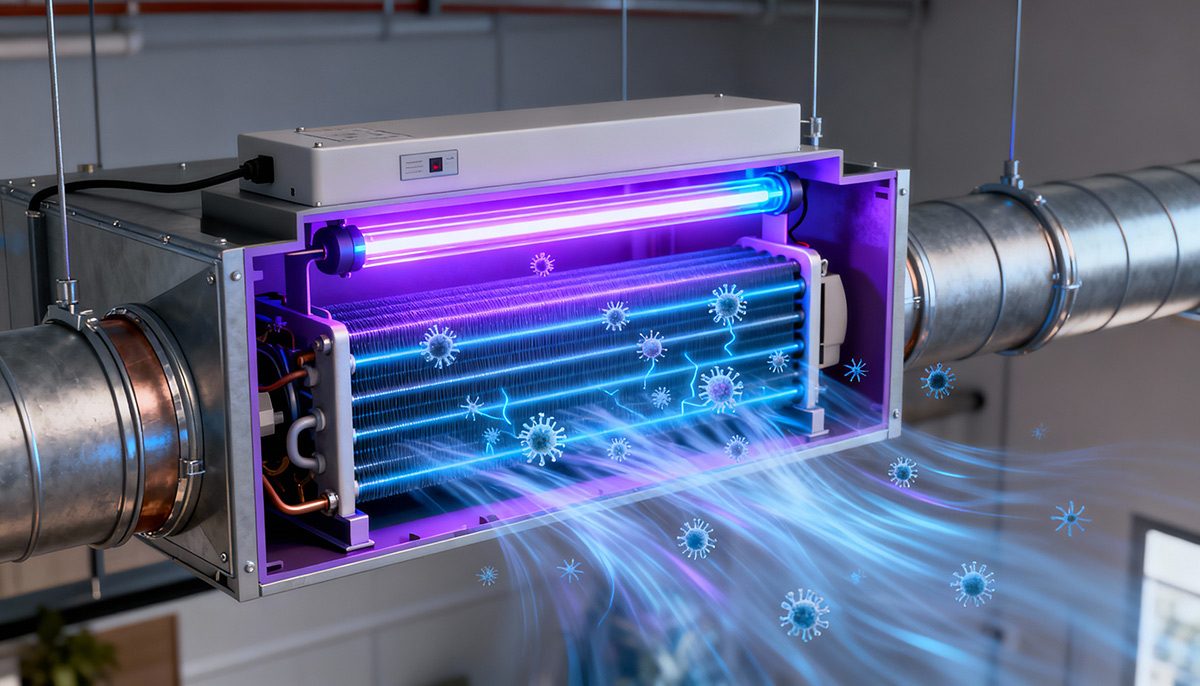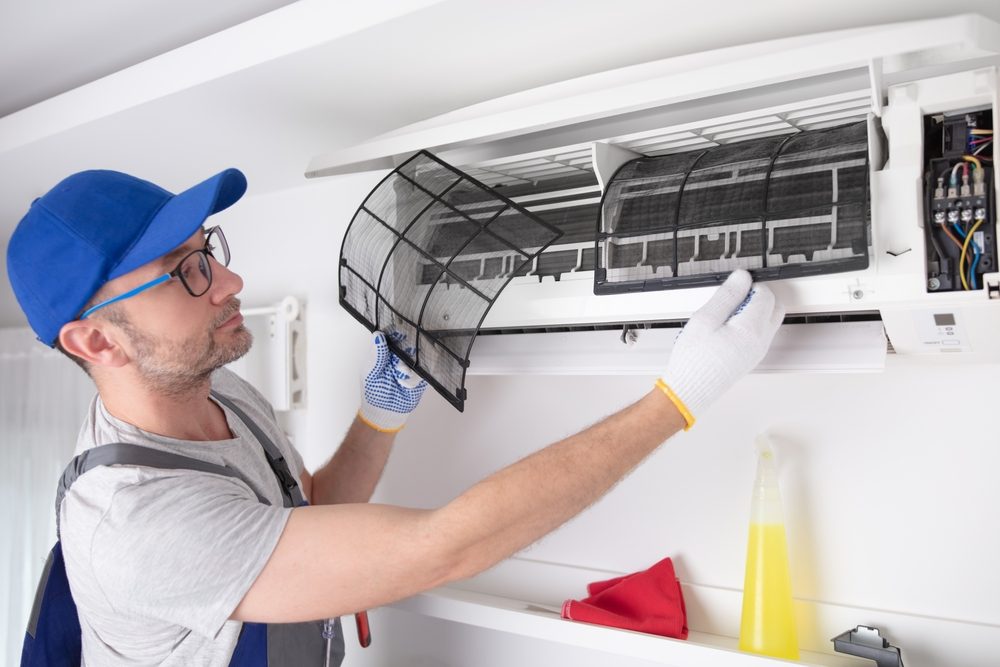
In this article, we’ll cover everything you need to know about volume control dampers (VCDs), a specialized type of damper used to regulate airflow in an HVAC heating or cooling system.
We’ll examine some basic definitions, examine how VCDs actually work within HVAC systems, consider their benefits, and discuss how to maintain them. So, let’s get started.
VCD technology: What is it?
Volume Control Damper (VCD) technology in HVAC systems involves using dampers designed to control and regulate airflow within the heating, ventilation, and air conditioning systems. These dampers are essential components for maintaining temperature, air distribution and air quality in various zones of a building. VCDs manage the volume of air that flows through ducts, allowing precise control over the distribution of heated or cooled air to different areas or zones within a building.
HVAC systems equipped with VCDs are divided into multiple zones. Each zone can be individually controlled, enabling tailored temperature settings and improved comfort for occupants in different areas. By controlling the airflow and reducing the need to heat or cool unoccupied or less-used areas, VCD technology enhances the overall energy efficiency of an HVAC system, which can lead to cost savings. VCDs can be integrated with building management systems, allowing for automated and remote control of airflow settings.
How VCDs work in HVAC systems?
Let’s look at the main components of VCDs:
- Sensors: Sensors monitor environmental parameters such as temperature, humidity, and air quality within each zone. These sensors continuously provide real-time data to the central control system, ensuring that the conditions within each zone are accurately tracked.
- Actuators: Actuators are attached to the dampers that physically move the damper blades to open, close, or modulate their position. These movements adjust the volume of airflow through the ducts.
- Control algorithms: Control algorithms are software programs within the central control system that process the data received from the sensors. These algorithms determine the optimal damper positions to maintain the desired environmental conditions in each zone.
Step-by-step process of VCD operation
Let’s now break down how VCDs operate:
Monitoring conditions: Sensors placed in each zone of the building continuously monitor parameters like temperature, humidity, and air quality. This real-time data is sent to the central control system.
Data analysis: The control system, equipped with advanced control algorithms, analyses the incoming data from the sensors. It compares the current conditions in each zone to the desired set points.
Decision making: Based on the analysis, the control algorithms determine the necessary adjustments to the airflow. If a zone is too warm or cold, the algorithms decide how much to open or close the dampers to achieve the desired conditions. If the room is too warm, the damper may partially close to reduce the flow of heated air; if the room is too cold, the damper may open wider to increase the flow of heated air.
Continuous feedback: As the dampers adjust, the sensors continue to monitor the conditions in each zone. This feedback loop allows the control system to make continuous, real-time adjustments to the dampers, ensuring the environmental conditions remain stable.
Energy efficiency and comfort: By controlling the airflow to each zone, VCDs help maintain a consistent and comfortable indoor environment. They also improve energy efficiency by directing conditioned air only to the areas that need it, reducing the overall load on the HVAC system and lowering energy consumption.
Benefits of VCDs in HVAC systems
Let’s now break down how VCDs operate:
- Energy efficiency: Volume Control Dampers (VCDs) significantly enhance the energy efficiency of HVAC systems. By precisely regulating the airflow to different zones within a building, VCDs ensure that only the necessary amount of conditioned air is delivered to each area. This targeted approach reduces the need to over-condition spaces, lowering the overall energy consumption. This optimization results in substantial energy savings.
- Improved comfort: VCDs are crucial in maintaining a consistent and comfortable indoor environment. By controlling the airflow to each zone, VCDs prevent the common issue of hot or cold spots within a building. This precise control allows for customized temperature settings in different areas, ensuring that occupants in each zone experience their preferred level of comfort. VCDs respond dynamically to real-time conditions, adjusting the airflow to maintain the desired temperature and air quality. This adaptability enhances overall occupant satisfaction and comfort.
- Enhanced system longevity: Using VCDs can extend the lifespan of HVAC systems. By optimising airflow and reducing the load on the system, VCDs help prevent excessive wear and tear on HVAC components. When the system does not have to work as hard to condition the air, the mechanical parts experience less stress and strain. This reduced workload translates to fewer breakdowns and maintenance issues (which we will look at next), ultimately prolonging the life of the HVAC equipment and reducing costs.
Maintenance of VCDs in HVAC systems
Here’s a basic checklist when it comes to maintaining VCDs:
- Regular inspection: Regularly inspect the VCDs for any signs of wear and tear, corrosion, or damage. Check the damper blades, actuators, and control systems to ensure they are in good condition.
- Clean the dampers: Over time, dust and debris can accumulate on the damper blades and within the ductwork. Regularly clean the dampers to prevent blockages and ensure smooth operation. Use a soft brush or cloth to remove any build-up and ensure the dampers can open and close freely without obstruction.
- Lubricate moving parts: Lubricate the moving parts of the VCDs, such as the hinges and actuator mechanisms, to reduce friction and prevent wear. Use a suitable lubricant recommended by the manufacturer to ensure the longevity of the components.
- Test actuators and control systems: Periodically test the actuators and control systems to ensure they function correctly. Ensure that the actuators are responding accurately to control signals. Check the connections and wiring for any signs of wear or damage, and repair or replace any faulty components.
- Calibrate sensors: If your VCDs are part of an automated system, ensure that the sensors used to monitor temperature, humidity, and air quality are calibrated regularly. Accurate sensor readings are crucial for the control algorithms to make precise adjustments to the damper positions. Follow the manufacturer’s guidelines for sensor calibration to maintain optimal performance.
Conclusion
Volume Control Dampers (VCDs) play a crucial role in modern HVAC systems by providing precise control over airflow distribution. Their ability to enhance energy efficiency, improve occupant comfort, and extend system longevity makes them indispensable in residential and commercial settings.
Daikin is a world leader in HVAC systems, offering a wide range of solutions tailored to meet diverse building requirements – including residential, commercial, and industrial. Daikin offers a full lineup of split systems, packaged units, ductless mini-split systems, VRF (VRV) systems, and more – each designed to deliver exceptional performance, energy efficiency, and comfort. With innovative, pioneering technology and exceptional service, Daikin has sold millions of systems in 140 countries. If you would like to find out more about Daikin’s products, contact us today.



